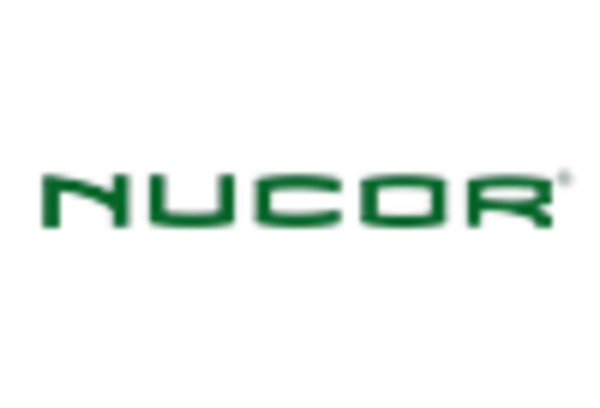Global Supply Chain Disruptions
Recent disruptions in global supply chains have highlighted the importance of local sourcing, particularly in the metal recycling market. As industries face challenges in obtaining raw materials, the reliance on recycled metals is becoming more pronounced. The metal recycling market is positioned to benefit from this shift, as companies seek to mitigate risks associated with supply chain vulnerabilities. In 2025, the emphasis on local recycling initiatives may lead to increased investments in recycling facilities, thereby enhancing the overall capacity and resilience of the metal recycling market.
Economic Incentives for Recycling
Economic factors play a crucial role in shaping the metal recycling market. The potential for cost savings associated with recycling metals is a significant motivator for industries. For instance, using recycled aluminum can save up to 95% of the energy required to produce new aluminum from raw materials. This economic advantage is likely to drive more companies to engage in recycling practices, thereby expanding the market. Additionally, government incentives and subsidies aimed at promoting recycling initiatives can further bolster the metal recycling market. As businesses recognize the financial benefits of recycling, the market is expected to grow, creating a more sustainable economic model.
Increasing Environmental Awareness
The growing consciousness regarding environmental sustainability is a pivotal driver for the metal recycling market. As consumers and businesses alike become more aware of the ecological impact of waste, there is a marked shift towards recycling practices. This trend is reflected in the increasing demand for recycled metals, which are perceived as more environmentally friendly compared to virgin materials. In 2025, the metal recycling market is projected to witness a surge in participation from various sectors, including construction and automotive, as they seek to reduce their carbon footprints. The heightened focus on sustainability is likely to encourage investments in recycling technologies, further enhancing the efficiency of the metal recycling market.
Technological Innovations in Recycling
Technological advancements are transforming the landscape of the metal recycling market. Innovations in sorting and processing technologies are enhancing the efficiency and effectiveness of recycling operations. For example, the introduction of automated sorting systems has improved the recovery rates of metals, making recycling more economically viable. In 2025, the metal recycling market is likely to benefit from these technological improvements, which can lead to higher quality recycled materials. Furthermore, the integration of artificial intelligence and machine learning in recycling processes may optimize operations, reduce costs, and increase the overall competitiveness of the metal recycling market.
Urbanization and Infrastructure Development
The ongoing trend of urbanization in the United States is driving demand for metals, which in turn fuels the metal recycling market. As cities expand and infrastructure projects proliferate, the need for construction materials, including recycled metals, is likely to increase. In 2025, the metal recycling market may see a significant uptick in demand from the construction sector, as builders seek sustainable materials to meet regulatory requirements and consumer preferences. This trend suggests that the metal recycling market will play a vital role in supporting urban development while promoting environmental sustainability.

















Leave a Comment